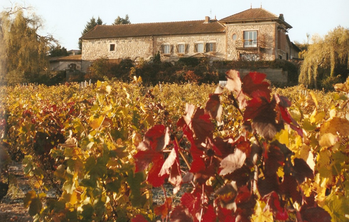Domaine du Pavillon >
Loire >
France|
 |
COTE ROANNAISE
From the very upper reaches of the Loire River, come the delicious, yet mostly unknown, red wines of the Cote Roannaise. Once a major supplier of wine to Paris and the Royal Court, the wine-producing region has shrunk to a mere 250 acres producing 55,000 cases of wine a year. The Gamay grape flourishes on these steep, granite slopes. Many of the vineyards are terraced and the best sites have a southeastern exposure, with all harvesting done by hand. Beaujolais is just under 50 miles away, but a more different expression of the Gamay grape could not be found. Part of this difference is surely due to the fact that a different clone is used, the Gamay Romain, as well as the fact that the vinification is more traditional and less manipulated than at its famous neighbor.
After many years at the helm, Maurice Lutz sold the property to his assistant of 15 years, Eric Villeneuve, in 2007. The wines are still rich and flavorful with that hint of damp earth and truffles that the best French country wines exhibit. These hand-crafted wines are created from 7 hectares of vineyards with a granite and sand sub-soil and excellent draining characteristics. The southeast exposition favors the vine and grape maturity. The average age of the vines is 55 years. The viticulture is lutte raisonnée with low yields and the space between the vine rows is plowed to aerate and allow grass to grow between the rows. The grapes are manually harvested.
These wines sell out quickly in France so he has rarely exports. To drink this wine in America is a rare opportunity (and a pleasure!) |
 |
| Cote Roannaise |
100% Gamay.
Unlike in Beaujolais, the wines undergo semi-Carbonic maceration which means that the grapes are fermented in sealed tanks but with a small degree of oxygenation. The semi has the advantage of fruitiness and aromatic exuberance, but with more color and structure than pure carbonic maceration. The fermentation starts in a sealed tank and enjoys the effect of fermentation in a CO2 environment but then, at some point, air is introduced via the tap.
|

